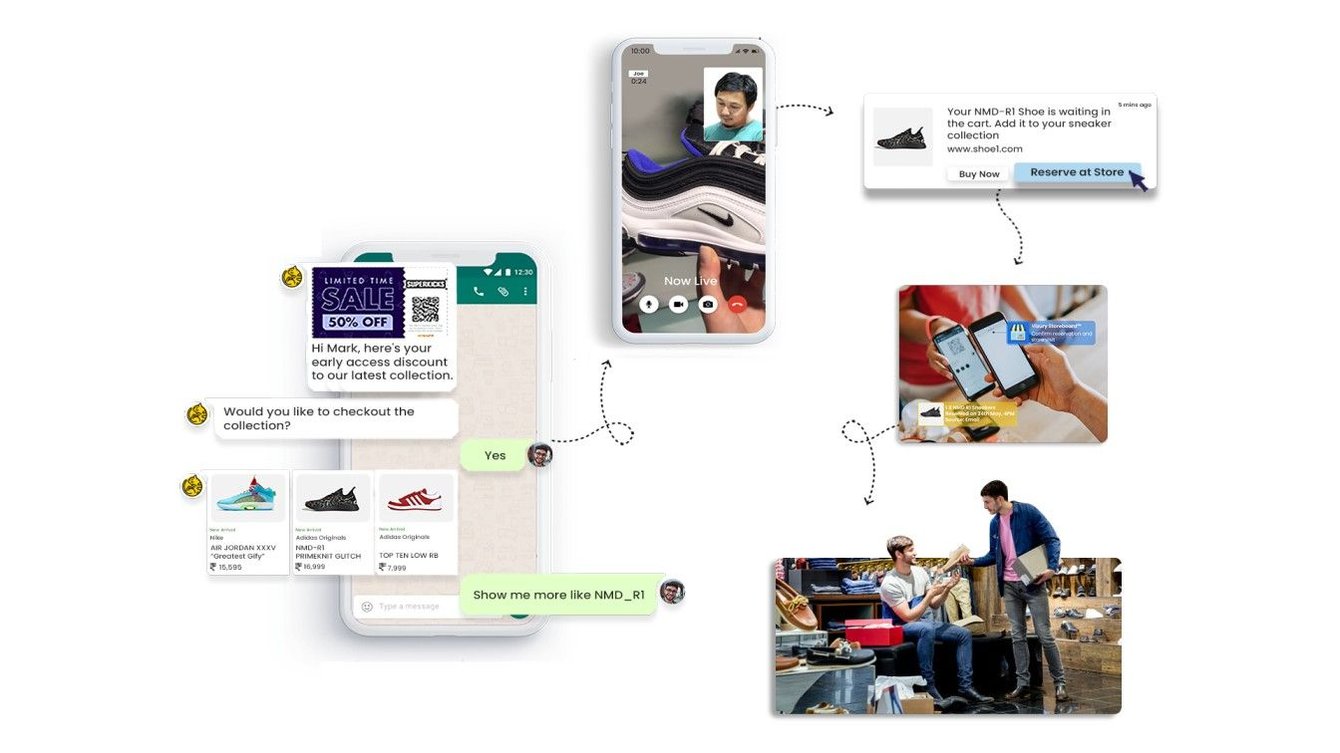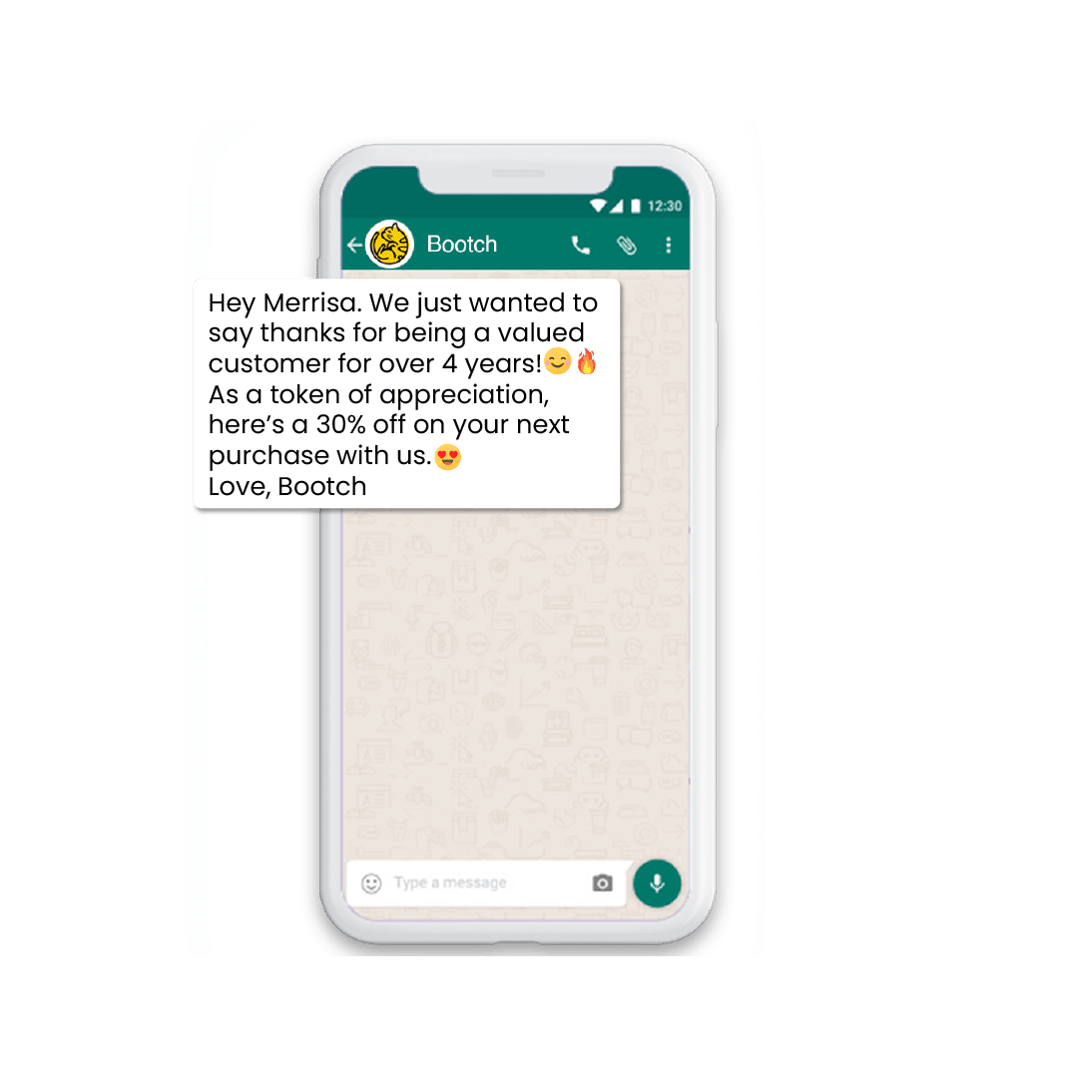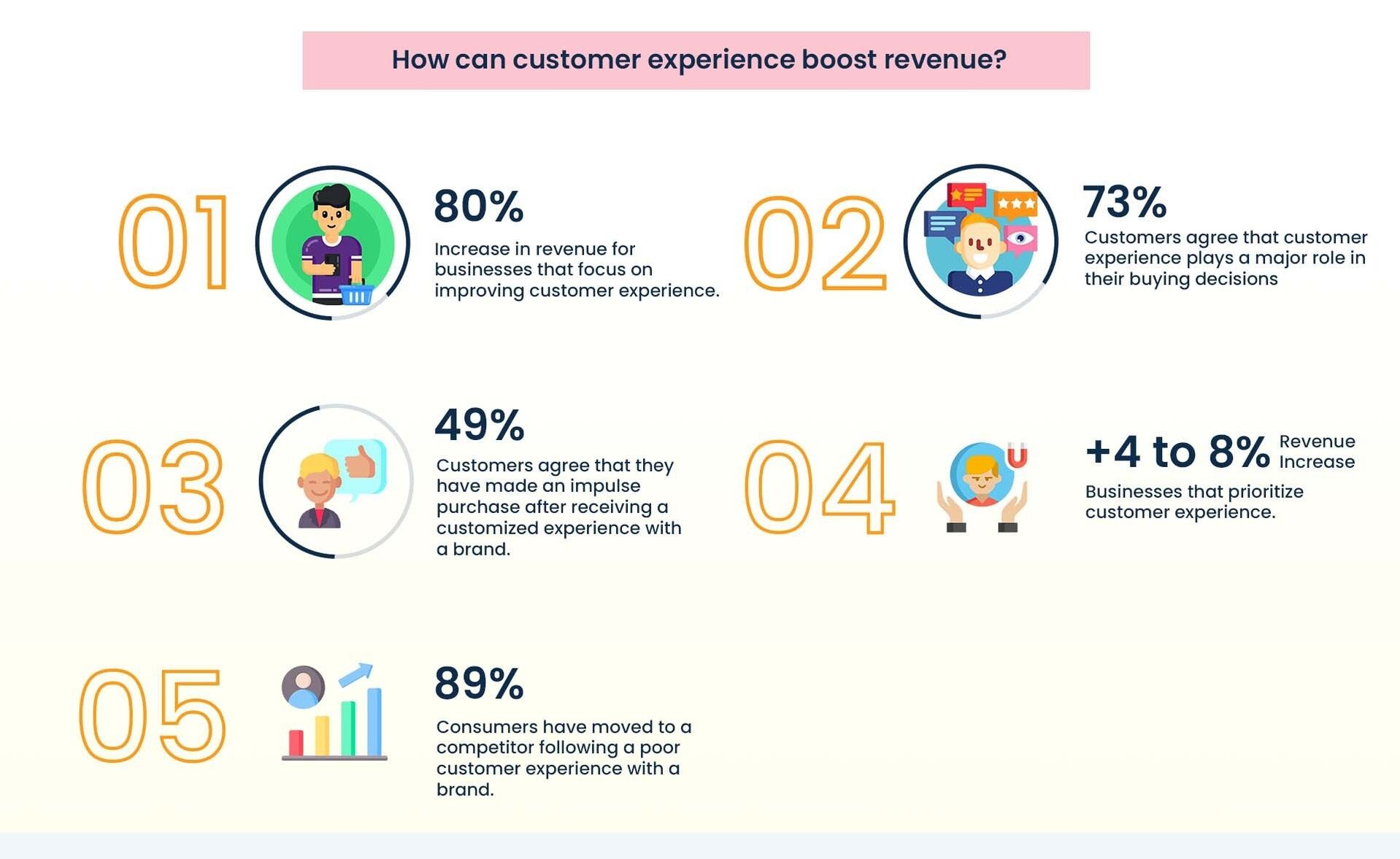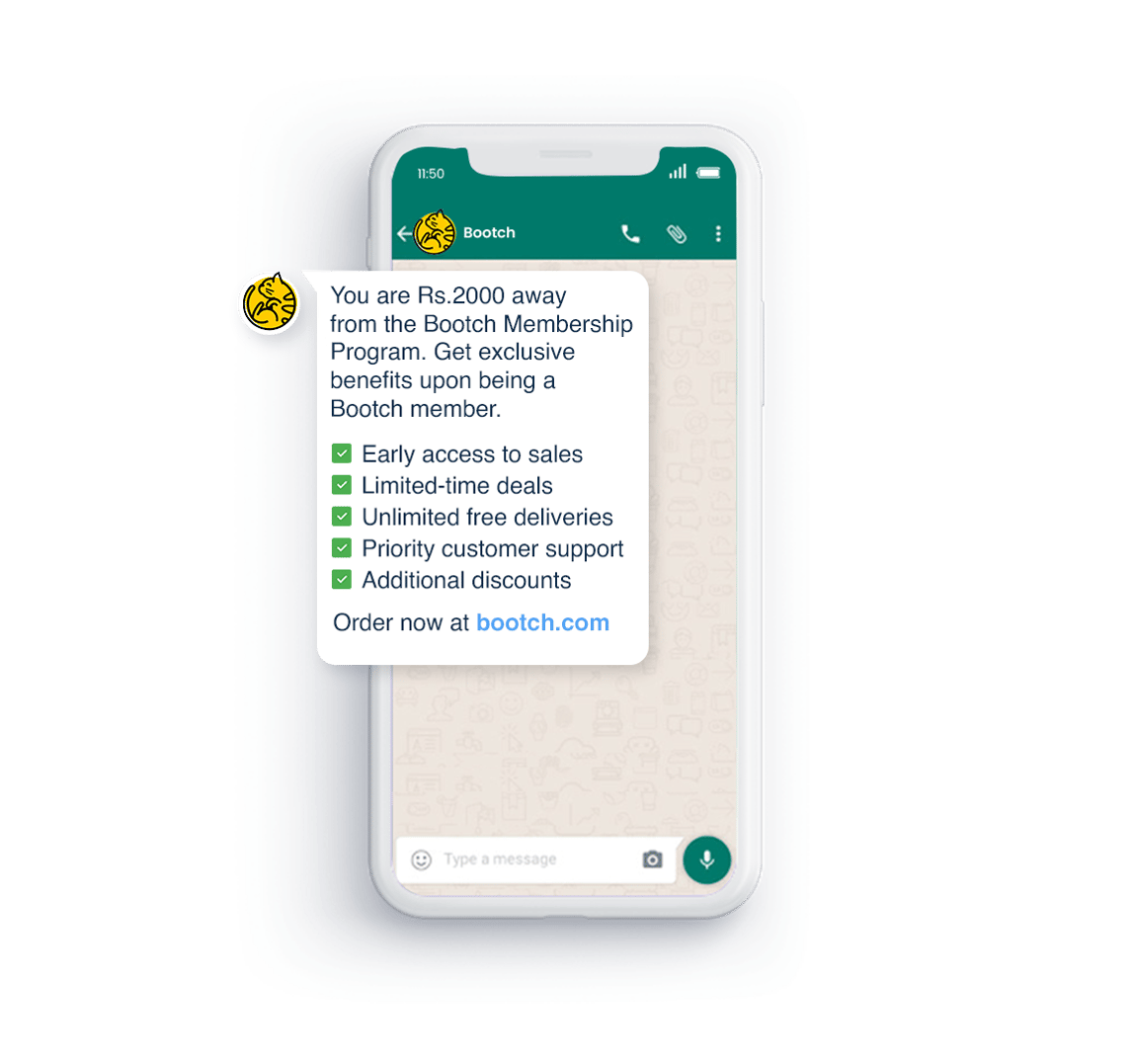Conversational Commerce: Use Cases and Examples
Discover the power of conversational commerce with real-world use cases. Learn how brands are using AI chatbots to enhance customer engagement
Delivering exceptional customer experiences is the key to driving customer loyalty in commerce. Learn everything you need to know to get started

Marketing, sales, and customer success teams are more focused on creating exceptional customer experiences now more than ever.
Exceptional customer experience= customer loyalty
But how do you do that?
There are multiple ways to understand your customer’s shopping behaviors. But the best way to understand them is to leverage data.
Consumer buying trends play a major role in determining brand loyalty. Brands that collect and analyze consumer spending habits have a better understanding of how their product is performing. In fact, 67% of loyal customers spend more on products and services than new customers.
Customers should be able to trust your brand to deliver what you promise. And consistent monitoring and research will help deliver a consistent customer experience. Starbucks attributes a majority of the additional $2.65 billion in revenue to its rewards program to deliver an exceptional customer experience and to keep them coming back for more.
Customer loyalty can be measured by a customer’s likelihood to repeat purchase with a brand. This likelihood can occur due to positive customer experiences and customer satisfaction. A brand has loyal customers when they:
✅Purchase repeatedly from your brand
✅Interact with your brand across channels
✅Advocate for your brand
If a customer has a negative experience with your brand they are more likely to tell others and may even abandon you for a competitor. For most brands, the customer experience is modeled around a funnel.
However, as customer journeys have become non-linear, it is far more difficult to design a journey based on a set of templates. Modern consumers prefer convenience and speed and expect consistency on their terms at any time across channels. Hence, it has become crucial for brands to devise seamless customer journeys to build long-lasting relationships with customers.
Here are a few statistics to consider:
A loyalty marketing strategy can be defined as a strategy that incentivizes customers to purchase repeatedly from a brand. This strategy is carefully designed to ensure a seamless customer experience across channels at any given time.
It is common knowledge that acquisition is expensive. To be precise, Forrest Research has found that it is 5x more expensive to acquire new customers than to retain existing ones. Consider all the steps required to acquire a new customer. Your brand has to make the customer aware, educate them about the product and share a comparative advantage over competitors. Even if they agree, you would have to provide a seamless journey to finally complete the purchase.
However, existing customers already know what they want and how satisfied they are with their purchase. Since they already know what they are dealing with, you can skip to the good part and give them an exciting deal that they just can't ignore.
In addition, it's easier to sell products to existing customers. According to the book Marketing Metrics, the probability of companies selling to an existing customer is 60-70%. On the other hand, the probability of selling to a new customer is 5-20%. These statistics dictate that having an effective customer retention strategy is crucial to sustaining your business.
A happy customer is more likely to spend more on your products and services. It is essential to assess the buyer’s journey cohesively. When mapping out the journey, you must assess the customer’s experience at each stage of the journey. Here’s how you can build customer loyalty to stay ahead of the competition and boost customer retention:
Loyal customers know what to expect when they shop with their favorite brands. And it is essential to ensure a seamless experience across all touchpoints. An omnichannel brand allow customers to start their conversation on one channel and continue on another while ensuring a consistent experience. An omnichannel customer engagement strategy is one of the best ways to boost customer loyalty. A consistent brand experience enables customers to rely on the brand no matter where they shop and ultimately ensures customer loyalty.

Although it may be helpful to assess your competition, it is more beneficial to focus on your customers. Brands can leverage customer data to understand what they are looking for and deliver based on their needs. Every customer interaction equally contributes to brand loyalty.
You can start by segmenting your customers based on their buying habits, favorites, and feedback and send relevant content that the customer is looking for. Even if you do what your competitors are doing to win customers, it may not produce the same results. The best way to ensure that you are the most loved brand among your customers is to ease their shopping experience and send relevant messages.
#3. Ensure Consistency
Consistency is key to almost everything whether its a career, maintaining a relationship or building a brand. For instance, if you buy a coffee at any Starbucks, you would receive the same taste, offers, and service. Had you received any difference in services, chances are you would probably never have been a loyal customer of the brand. No matter where you purchase the coffee from, the brand experience is consistent and evolving.
Appreciation is one of the best ways to build loyalty. A brand that delivers exceptional customer experience and shows appreciation for their business is the one that stands out. You might even consider setting up a loyalty program that allows you to show true appreciation to your high-value customers.

When you give exclusive access to your program, it makes the customers feel good about their purchase and keeps them coming back for more. Thus, allowing your brand to boost customer lifetime value.
The best way to understand your customer’s needs is to get feedback. Roll out customer surveys across channels and start evaluating the feedback. Customer satisfaction surveys are often used following a customer support interaction that helps your brand understand whether a customer is happy with your service. When you find out exactly where you are going wrong, you can take actionable steps to rectify the situation. You can also make amends with a dissatisfied customer using several ways. For example, sending a 30% discount coupon on their next purchase as a token of apology.

In addition, you can also provide channels for customers to leave feedback such as Twitter or Facebook. A great example is Nike wherein they use a separate Twitter handle to answer queries and give real-time resolutions to shoppers.
Whether it's a small business or a large one, every customer interaction poses an opportunity to grow your brand. A brand must position itself in a way to maximize growth from its existing customer base by managing the 3 Rs of customer loyalty.
Customer retention is by far the most important element in building a loyal customer base. It is crucial for brands to understand how their customers perceive them. It's not just about getting a fair price for the products purchased. Customers want to have experiences with a brand that makes them feel good about their purchase.
Rewards are the transactional part of your program which allows brands to offer a good deal and keep customers coming back for more. However, the key is to offer tangible rewards which align with the values of the customer. For instance, an environment lover may join your program if your brand plants trees on every purchase.
Retailers tend to overcomplicate this process when they list a bunch of criteria to join the program. A customer is more likely to back out if it gets confused. Hence it is essential to keep it simple and to the point. Here’s an example.

In this example, the brand informs the customer of the amount they have to spend to join the customer loyalty program and lists all the benefits they would get once they become a member.
According to The Loyalty Report 2017, the average consumer is involved in 14 loyalty programs but has the capacity to engage with only 7 of them. A brand’s customer loyalty marketing must be more customer-centric and relevant.
It's not always about the coupons and discounts that your rewards program gives. Assess your brand’s customer journey and optimize rewards in their best interest. This will allow your brand to deepen its engagement with customers over time.
Loyalty programs are a great way to show that your appreciate a customer’s business. Here are some loyalty program ideas that can help:
A great way to begin an excellent relationship is to offer one-time discount coupons on the first purchase in exchange for their email address or phone number. The customer data collected can also be used to strengthen the relationship and keep the customer engaged via emails, SMS, social media, and others. A classic example is Swiggy. The food delivery brand offers a 50% discount on the customer’s very first order.
An excellent way to make your customers feel special and connected with your brand. You can personalize your customer's experience by offering exclusive birthday discounts. For instance, offering loyalty points that can be redeemed on the customer’s birthday, or birthday greetings and discount coupons. A great example is Westside. The loyalty program of this popular retail outlet offers birthday discount coupons. They offer a 20% off to shoppers who spend a minimum of Rs.5000 on their birthday month.
Referrals are a great way to acquire new customers and boost sales. You can allow customers to gain special rewards every time they refer to a friend or family member. The discount coupon can be sent once the new customer successfully signs up for a loyalty program.
A classic example is Flipkart. Flipkart rewards its customers with “super coins”. However, they can only have Flipkart plus (loyalty program) that offers free delivery, exclusive offers, and more if the customer collects a certain number of coins and purchases “Flipkart plus” with it.
Yes, loyalty programs help you boost sales. Customers love deals. In fact, a study by Bizrate Insights found that consumers deemed discounts and coupons to be ‘very important’ during their digital purchasing decisions. In addition, a loyal customer is more likely to repurchase, advocate or try a new product than new customers.
Brands that are paying attention to customer experience are already winning. Providing a consistent customer experience across all customer touchpoints not only ensures customer retention but also loyalty. Are you ready to revolutionize customer experience for your brand? Book your demo with Vizury today.
Discover the power of conversational commerce with real-world use cases. Learn how brands are using AI chatbots to enhance customer engagement
Discover why customer retention funnel is crucial for your business. Learn how to keep customers engaged, loyal, and boost long-term profitability.
Learn how you can reduce churn with marketing automation. Analyze why your customers are churning by understanding the customer’s journey and their...
Be the first to know about new B2B SaaS Marketing insights to build or refine your marketing function with the tools and knowledge of today’s industry.